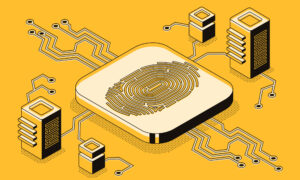Modern pet training devices, such as e-collars, vibration collars, bark deterrents, and invisible fence receivers, rely on compact electronics to deliver signals that guide pet behavior. These tools are designed to provide feedback—be it a sound, a mild vibration, or a static pulse—to reinforce training goals and improve communication between pet and owner. At the heart of this technology are two essential components: batteries and circuits. While these elements may be small, they carry substantial environmental implications and raise questions about durability, safety, and disposal.
The Functionality of Batteries in Pet Devices
Pet training devices are portable by design, meaning they require internal power sources to function wirelessly. Most of them use rechargeable lithium-ion or lithium-polymer batteries due to their high energy density, compact size, and relatively long life. Others, especially older or budget models, may rely on disposable alkaline or button-cell batteries.
These batteries serve to power small microcontrollers, signal transmitters, audio or vibration modules, and LED indicators. Depending on the model, a full charge can last anywhere from several hours to multiple days. Rechargeable options are generally more environmentally friendly, though even these have a finite number of charge cycles before they degrade.
Battery safety is another consideration. Because these devices are often worn directly by pets or used in outdoor environments, the power systems must be well-sealed to prevent short-circuiting due to water ingress or impact. Quality devices incorporate safeguards such as thermal cutoffs and protective casings, but wear-and-tear or poor handling can still cause malfunction or leakage over time.
Circuitry and Signal Control
Pet training devices depend on compact printed circuit boards (PCBs) to manage inputs and outputs. These PCBs host a variety of small components: resistors, capacitors, transistors, integrated circuits, and wireless modules, each performing specific functions that control the device’s behavior.
For example, a remote training collar must be able to receive a signal from a handheld transmitter, decode it, and then activate a particular response such as a tone, vibration, or static pulse. The internal circuitry processes these instructions almost instantly. The precision of this response is critical; too strong or delayed a signal can confuse the pet or cause distress, while inconsistent operation undermines the training process altogether.
As devices become more sophisticated—adding features like GPS tracking, multiple signal levels, and customizable feedback—the complexity of the circuit design increases. Advanced models may include memory chips, touchscreen interfaces on transmitters, and even Bluetooth connectivity to sync with mobile apps. These enhancements expand functionality but also make the electronics more intricate and difficult to repair or recycle.
Durability and End-of-Life Challenges
While many pet training devices are designed for rugged use, their compact and sealed construction often makes them hard to disassemble or service. This design approach, while great for water resistance and portability, limits access to internal batteries and components. As a result, once the battery fails or a circuit component is damaged, the entire device is frequently discarded.
The non-replaceable nature of many batteries adds to the challenge. Unlike older electronics where battery replacement was straightforward, today’s compact designs often integrate batteries directly into the housing, making removal impractical without specialized tools. Additionally, soldered connections on PCBs further complicate any attempt at repair or recycling.
Environmental Considerations
Improper disposal of electronic devices can lead to environmental damage. Batteries, particularly lithium-based ones, can pose a fire hazard or leak harmful chemicals into the environment if not properly handled. Circuit boards, which often contain lead, brominated flame retardants, and other hazardous substances, contribute to long-term pollution when they end up in landfills.
Because pet training devices fall into the category of small consumer electronics, they are often overlooked in standard recycling programs. Yet, the materials inside them make them important to divert from the general waste stream. Extracting the valuable metals from circuit boards and recovering battery materials requires proper recycling channels. Unfortunately, the small size and mixed materials of these products make them expensive to process, which discourages widespread collection and recycling.
Opportunities for Better Design and Awareness
Addressing these challenges begins with improving product design. Replaceable batteries, modular electronics, and fewer mixed materials could enhance the serviceability and recyclability of pet training tools. Manufacturers who prioritize longevity and environmental impact in the design phase can make a substantial difference in how their products affect the planet.
On the consumer side, awareness is key. Pet owners who rely on electronic training tools should be informed not just about how to use them humanely, but also how to responsibly handle them when they no longer function. Encouraging reuse, battery recovery, and proper e-waste recycling can prevent these small yet ubiquitous devices from contributing unnecessarily to environmental harm.
Conclusion
The batteries and circuits in pet training devices may be compact, but they represent a growing segment of electronic waste. Understanding how these components work and the impact they have at end-of-life is vital for both manufacturers and consumers. Through better design, responsible use, and sustainable disposal practices, the pet tech industry can continue to evolve without compromising environmental health.



































